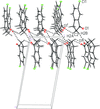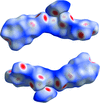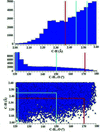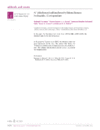issue contents
November 2016 issue

Cover illustration: L-Dopa, or L-3,4-dihydroxyphenylalanine, is a precursor for neurotransmitter molecules and is used in the treatment of Parkinson's disease. For the L-dopa HCl salt, a second polymorph is now reported which crystallizes in the monoclinic space group I2. The asymmetric unit consists of one L-dopa molecule in the zwitterionic form, a second in the cationic form with a protonated ![[alpha]](/logos/entities/alpha_rmgif.gif) -amino group and a Cl- anion. In the crystal, O-H
-amino group and a Cl- anion. In the crystal, O-H O, N-H
O, N-H O and N-H
O and N-H Cl hydrogen bonds result in the formation of R44(18) and R44(8) ring motifs. See: Kathiravan, Balakrishnan, Venkatesan, Ramamurthi, Percino & Thamotharan [Acta Cryst. (2016). E72, 1628-1632].
Cl hydrogen bonds result in the formation of R44(18) and R44(8) ring motifs. See: Kathiravan, Balakrishnan, Venkatesan, Ramamurthi, Percino & Thamotharan [Acta Cryst. (2016). E72, 1628-1632].
research communications














































































 journal menu
journal menu


























































